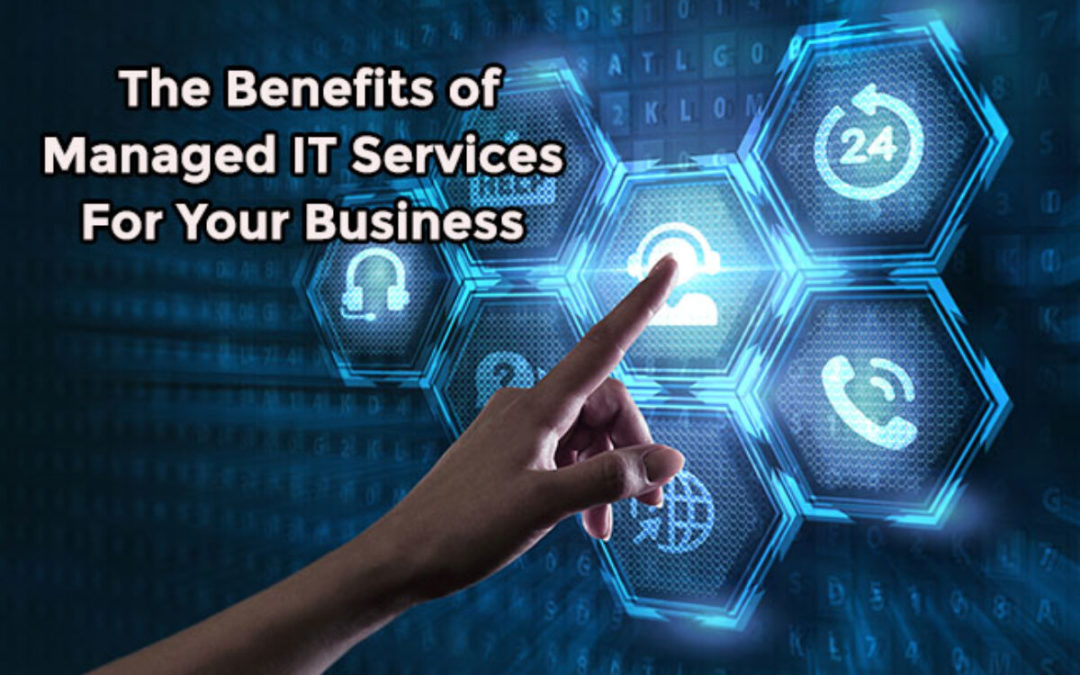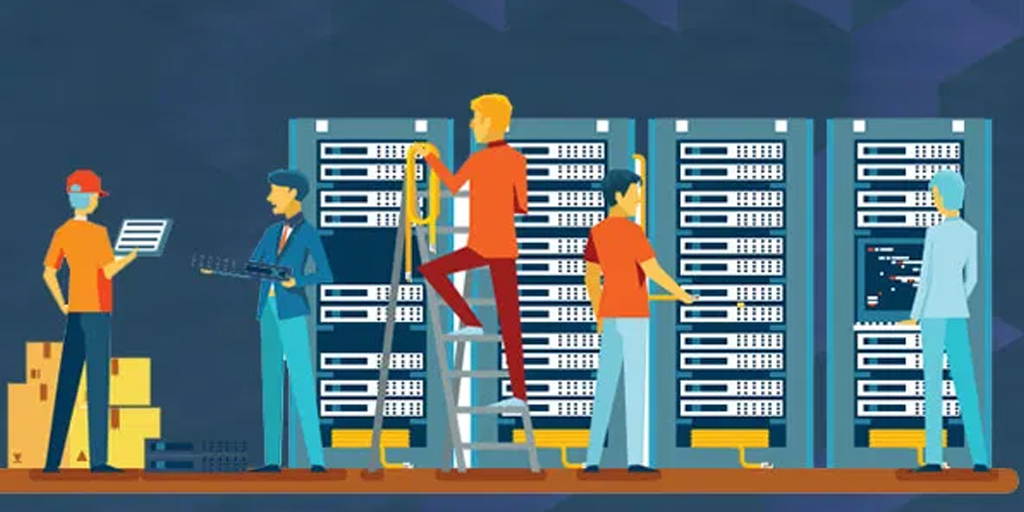
by Sangeetha | Dec 18, 2021 | IT infrastructure services
Ransomware these days is the business sector for criminals. Thus, we tend to see additional gangdom and nation-state actors obtaining concerns. These days, the threat landscape is more significant than ever, with offer chain attacks targeting major vendors and pushing compromised computer code updates as seen within the 2021 SolarWinds incident or shipping conglomerate Maersk in 2017. We hear news of a widely known organization or utility falling victim to ransom demands before information gets destroyed or sensitive info leaked. With the proliferation of untraceable cryptocurrencies reaching record financial highs and ever additional refined encoding ways – the profit potential is beyond ever.
Experts say the most effective defense against ransomware may be an intelligent backup; however, what if your backups get encrypted and command for ransom? What’s the price of not having a reliable backup?
Backups are the literal last effort of defense against falling victim to ransomware. Now not ought to we tend to contemplate backups associate degree afterthought just in case of a deleted file or sick a previous version of a file overwritten accidentally. Winning backup restoration is the single purpose of failure between paying a ransom and winning restoration of encrypted files. Backups, therefore, ought to be protected in the slightest degree prices.
Modern-day ransomware nearly constantly scans for and targets the native backups 1st throughout the initial phases of infection. It can be seen in compromised Exchange Servers exploited from the March 2021 Hf attack.
Suppose the ransomware will code the backups or delete backups before the protected computers get encrypted, the upper the probabilities of assembling the ransom to recover the files. It makes protective the backups ever additional vital because it has become the definitive line within the sand between paying a ransom and sickening the files or losing everything.
Can we have a tendency to trust a criminal to carry their finish of the discount once paying a ransom? Paying a ransom additionally lets the unknown wrongdoer place a price on this information and will increase the probability of reoccurrence. WHO is to mention they’re going not to attempt again? It makes off-site backups that way more vital.
One of the most effective and sometimes established backup methods is duplicating off-site or air-gapped backups. An air-gapped backup is an offline draft of the info, and much less possible to fall victim to ransomware from a compromised network. It will increase the probabilities of recovery and minimize the likelihood of paying an actual ransom. A cloud-based backup is a process purpose between a business losing all its information and paying a ransom. A few companies having off-site backups are currently obtaining asked from cyber insurance firms and are changing into a demand for coverage.
However, simply storing information off-site isn’t enough; the period from ransomware is vital, starting from days to weeks of lost revenue. It could be improbably prejudicial to a business’s bottom line. The time for recovery entirely depends on the strategy used for off-site backups.
One of the most efficient ways to dramatically reduce the uptime in case of a happening is an activity a cloud-based spin-up. Cloud-based spin-up permits business-critical servers to return online in a very protected cloud setting, whereas recovery and redress occur at the initial location. The replicated backups are physically air-gapped, and with a valid retention policy in situ, we will restore the info to a degree in time before the ransomware encoding. It permits workers and businesses to endure a happening in a much shorter time frame than restoring from backups to a compromised system. A cloud-based spin-up additionally allows IT workers to research and remedy a current infection and endure the attack and keep the business working at constant time.
However, a business’s ability to recover is just pretty much as good as their last tested backup. Simply replicating backed-up information to the cloud isn’t enough. It’s now not associate degree “if” for a business to be compromised, however additional of a when? Thus, it’s imperative often to schedule testing of the backed-up information to the cloud.
All we’d like to try is imagine the situation of sorting out the backed-up information that isn’t intelligent and what implications it’ll have. Because it is commonly aforesaid, an os of hindrance is price a pound of cure. Protective backups from ransomware are currently additional vital than ever. It will mean life or death for a business.
Fortunately, Navigator Systems contains various services that meet these desires, below our StorTrust whole. The key advantages include:
• It may be a IT managed service. Navigator Systems operates the recovery. Thus, you’ll consider different problems you will have at intervals in the business.
• The service includes an Annual Maintenance at. Thus you’ll make sure your recovery can work.
• We will offer air-gapped solutions as a part of our service for the final word protection.
• We embrace the power to run your systems in our cloud for up to thirty days for no further price. It provides you and your workers time to wash your systems or order new ones.

by Sangeetha | Mar 26, 2020 | IT infrastructure services
How much are you spending to support all the equipment in your company? Depending on your company size, IT hardware support costs can potentially consume up to two-thirds of the IT budget. So how can you drastically reduce the costs of maintaining your hardware without sacrificing the quality of support you receive?

Are you looking for ways to cut your maintenance costs? Here are 5 ways to dramatically reduce your support costs and obtain the service you expect from Navigator System.
-
HOW TO REDUCE MAINTENANCE COSTS WITHOUT SACRIFICING SUPPORT QUALITY
How much are you spending to support all the equipment in your data center? Depending on the industry and company size, IT hardware support costs can potentially consume up to two-thirds of the IT budget. What are some of the ways that you can drastically reduce the cost to maintain your storage, server, and network hardware? Let us help you find money-saving tactics to trim the IT infrastructure, without sacrificing the quality of support you receive.
-
USE FLEXIBLE SUPPORT CONTRACT OFFERINGS
CUSTOMIZE A SUPPORT SOLUTION TO FIT YOUR NEEDS
Think support for your data center hardware is a “one-SLA-fits-all” scenario? Think again! Third-party support allows you to pay only for the services that your equipment actually requires. You aren’t forced into a Service Level Agreement (SLA) for your storage hardware that you don’t really need. Want Level 1 support for your entire data center? Third-party maintenance providers can do that!
But, if your organization is like many others, you don’t need Level 1 response for every piece of equipment within your data center. Flexible SLAs enable you to customize the level of support for each piece of equipment as needed, so if some parts need 4-hour-on-site response and less critical equipment only needs next-business-day parts, you can tailor a support solution specific to your environment.
Additionally, third-party support can give you the ability to change or modify the specifics on your service agreement at any time. So, if you have equipment that has lapsed in maintenance coverage, you can add it to your maintenance service agreement (MSA) without having to worry about potential recertification fees to put that equipment back onto support.
Choose a support provider that offers coterminous maintenance agreements to have all your support contracts renew at the same time. This saves time and money by reducing administrative hassles for your team and redirecting that effort in more productive ways.
-
CONDUCT AN EQUIPMENT AUDIT BEFORE PURCHASING OR RENEWING A SUPPORT CONTRACT
DON’T LEAVE MONEY ON THE TABLE
Keeping accurate and up-to-date information about your data center assets and system configurations can help ensure that you receive support pricing quoted specifically for your data center’s equipment. Support quotes typically take multiple factors into account other than SLA, including the age and type of the hardware, the physical location of the hardware, and the configuration. If you don’t have a full understanding of the equipment in your data center, you may be over- paying for support you don’t need on equipment you no longer use.
Prior to renewing your maintenance agreement, conduct an internal audit of your equipment. This will help ensure that you are not renewing support services on equipment that is no longer active. Having accurate information about your hardware will allow you to get the quote you need the first time around.
-
EXTEND THE LIFE OF YOUR HARDWARE UNTIL YOU’RE READY TO UPGRADE
TAKE BACK CONTROL OF WHEN AND WHAT TO UPGRADE
When you purchase storage, server, or networking equipment brand new from the OEM, that hardware comes with a warranty for a certain period of time. After the warranty expires, the OEM will typically spike the cost to support the post-warranty equipment, in an effort designed to push you to upgrade your hardware to the newest generation of product. However, the hardware could still be valuable in your data center for several more years before you may decide to upgrade or replace it.
One way to save money on hardware support is by using a third-party maintenance vendor to extend the life of your equipment. Third-party support protects your equipment after the OEM warranty has expired at a fraction of the OEM maintenance quote – typically 30-70% less. Not only will you be saving money on the support contract, but you also won’t have to upgrade and replace your hardware as often, allowing you to retain the control of choosing what to upgrade and when , as it fits your organization’s budget and needs.
-
MATCH THE SLA TO THE EQUIPMENT’S NEEDS
CONSIDER NEXT-BUSINESS-DAY PARTS REPLACEMENT FOR LESS CRITICAL EQUIPMENT
Unless all of the equipment within your data center is mission-critical, it is likely that you don’t need to have same-day service for parts replacement for that equipment. Mismatching SLAs to the equipment’s needs is a common way to overspend on your hardware support. Service-level disparities on your equipment may be caused by a provider requiring the same SLA for all equipment in your environment, or may be another result of poor asset management and incomplete decommissioning of equipment.
Your organization may require the most comprehensive SLA on all your hardware, but then again, it may not—so you should try to match the SLA with equipment type and use to avoid overspending. While it may seem safer to put every piece of equipment under a high SLA, at a certain point, over-provisioning that level of support will become wasteful and expensive. By adjusting your maintenance service agreements to next-business-day parts replacement for equipment that isn’t mission-critical, you can end up saving a considerable amount of money in support costs.

QUICK TIP: No matter what SLA you have for parts replacement, ask your support provider about the testing process for spares, so you can feel confident that the replacement part has been tested and certified to work when you need it.
These money-saving tactics can be used to trim the IT maintenance budget without having to sacrifice the level of care you need for your data center hardware. Third-party support can maintain your storage, server, and networking equipment at a cost up to 70% off OEM support prices. WANT TO START SAVING? To learn more about third-party support and if it is the right fit for your organization’s needs, visit navigatorsystem.com/support or call 9986288377

by Sangeetha | Feb 28, 2020 | IT infrastructure services
Data Center Downtime is Expensive: 3 Ways Third-Party Support Can Help
Running a business in today’s world means taking a more technological approach. As the “brains” of the operation, data centers allow you to do just that. Your data center plays a major role in day-to-day business operations for employees and clients alike. But relying heavily on your data center also has its downsides…unplanned downtime incidents can really cost you.
According to recent surveys, 73% data center professionals indicated that the cost of unplanned downtime was more a day, while 36% reported a loss of more per day. Taking in these numbers may leave you wondering what you can do to avoid losing that much money. While human error plays a role in outages, businesses must prepare for unforeseen circumstances.
How Can Third-Party Support Help?
Have you ever hear the phrase “the best defense is a good offense?” This rings true when it comes to combating data center downtime. Being proactive about data center issues can save you thousands in the long run. This is where third-party maintenance plays a part. While third-party support does have the ability to save you up to 70% in your support budget, it comes with a slew of other benefits. The flexibility that third-party support provides helps keep up the intricacies of any given data center.
Tips to Minimize Downtime
1. Equipment Audits
The road to minimizing downtime begins with a full understanding of your data center. Too many IT planners make the mistake of not auditing their equipment. You don’t want to have hardware that’s in use but not supported. This could prove to be a large contributor to downtime. You also want to make sure that the hardware included in your maintenance agreement is actually in use. Using an IT Asset Management tool that tracks all of your support contracts, like Navigator System is a great way of staying on top of these details.
2. Pick the Right SLA
Beyond auditing your storage equipment, picking the best Service Level Agreement (SLA) is key. This determines the amount of support you receive on any given day. When choosing your support vendor, it is crucial that they can meet all your data center needs. Protecting your organization from costly downtime is as easy as signing up for an SLA that includes 24x7x365 Help Desk support. At Navigator System, we provide around the clock service from our help desk, and you can see all the details of our various SLAs and request a quote for one directly through our Navigator System.
3. Remote Monitoring & On-Site Spares
Another way to prevent data center downtime is to make sure your third-party support vendor allows for remote monitoring. By having someone to monitor your storage equipment, you stay in front of the issue. We will consult you to ensure that you have on-site spares of higher fail rate parts such as disk drives. By keeping these part at your location, you can fix an issue quickly and efficiently.
Still Need Help? Navigator System can help you tackle data center downtime. To learn more about third-party maintenance or to request a support quote, visit our third-party support page or call one of our specialists today at Call Us +91 080 25307537/ 38/ 49 Sales: +91 9986288377 Email Us: sales@navigatorsystem.com

by Sangeetha | Feb 28, 2020 | IT infrastructure services
Identifying options to maintain a peak level of IT operations while minimizing costs is a top priority for C-suite executives everywhere. Implementing programs to extend the life of hardware investments is a proven way to generate savings. That’s why many organizations have begun to move away from OEM contracts and have embraced the benefits of TPM maintenance. There are many business cases for TPM which prove out the most impactful benefits. We will explore a few.
One Stop Shop
For most businesses, the data center houses equipment from multiple OEMs, each of which represents individual, vastly different (and often cumbersome) support agreements. Every agreement requires quite a bit of time and effort. This inefficiency is a thing of the past with a TPM provider. With a TPM provider, even multi-vendor equipment can be covered by one simple coterminous agreement – with a single point of contact as well. This reduces paperwork significantly while freeing up time to be more productive.
Reduced Support Costs
One of the major downsides of the OEM business model is that maintenance costs increase year after year. Another whammy is that support for the equipment is eventually cancelled by the OEM once the asset reaches its End-of-Life (EOL) or End-of-Service-Life (EOSL). The OEM model relies on you being willing to replace equipment rather than keep it running. With a TPM provider, high quality maintenance and support is virtually guaranteed, and this allows keeps you from undertaking new capital expenses that you don’t really need. TPM providers don’t need to find ways to recoup R&D investments, so there is no need to pass that financial burden on to you. TPM is a fruitful way to save up to 50% over traditional OEM post-warranty coverage.
Essential Flexibility
Another major problem with some OEM models is that they can offer limited maintenance options, so you’re essentially overpaying for an unnecessary level of support. Certain environments, like testing and development, do not require a same-day response, but if your OEM does not offer next-day options you may be paying for premium support you don’t really need. TPM providers are able to provide a wide array of services with an approach that can be fully customized to meet your needs. Coverage isn’t just flexible – it can evolve over time as your business and equipment mix changes. If you need to reduce support or add new equipment, your coverage will change with you.
It’s Time to Make the Leap
Making the decision to move beyond OEM maintenance brings with it a wide array of savings and support opportunities that most businesses can no longer afford to ignore. That is why it is so important to consult with a knowledgeable data center support provider to carefully weigh all of your options before you sign on the dotted line. An objective evaluation comparing your current level of OEM support and those of a non-OEM provider will be illuminating and ensure that every dollar you spend brings the maximum ROI possible.
Navigator System have Complete Solution on Servers, Storages, Workstation, Tape library, Switches & Routers IT Managed Services, IT Help Desk Support, Computer IT Support, Network Security, Server Maintenance, Data Backup, Cloud Computing Up gradation of existing Server & Storage Hardware, Call Us : +91 080 25307537/ 38/ 49 Sales: +91 9986288377 Or Email Us: sales@navigatorsystem.com

by Sangeetha | Dec 9, 2019 | IT infrastructure services
Why is it essential to plan, manage and execute a data center migration with the appropriate level of rigor and control, utilizing proven methods?
Mushrooming of more billion-dollar enterprises around the world in this century is making the world a more knowledge-rich and competitive place. In this mercurial and dynamic business sector Data driven businesses are facing challenges like data analysis, structuring, retrieval and modeling. As the business services depending on IT ,a data migration can cause significant degree of business risk. Here you can find the information on data centre migration techniques and the key focus areas for migration.
Reasons for data center Migration:
The Datacenter is the important aspect of an enterprise that is interconnected with IT hardware equipments ,software and business data.As business data powers every aspect of the management if there is any thing which affects the data will have impact on the business as the whole. But Data Migration is essential for a growing enterprise to have strong data foundation which minimizing risks of observational understanding or guess. The two main reasons for Data Center Migration are business reasons and technology reasons.
Scope of Data Center Migration:
The ability to undertake the migration is important to understand the preparations and investment required for a more ideal data center migration as enterprise IT architecture has direct impact on the migration initiative. A Successful data center migration requires the best asset management practice, ideal disaster recovery, change control programs and monetary management .Failing to have these elements pose a high degree of risk to the ongoing project and may cause negative impact on the business by outages.
Step Involved:
Conducting a readiness assessment :
Evaluate the accuracy and completeness of processes, documentation and procedures. It is essential to made a determination for each gap area on whether to implement a long-term or interim solution based on the project timeline.
Areas to Focus:
- Support Structure
- Service Level Agreements
- Documentation
- Asset Management
- Maintenance Contracts
- Change Control
- Architecture
Assess the environment
The output of assessing the environment is asset repository which has information like the current inventory, technical, business connections, and backing-up asset data.
Using the industry standard repository like a configuration management database (CMDB) is ideal for automated discovery of assets ,as it is capable of providing a comprehensive view of all aspects of each asset.
Design, validate and plan the project :
This overall project plan consists of detailed task plans, time budgets,resource & planning. A data center migration calendar is essential to produce the timing of move events in relation to cycles and business initiatives in detail.
Implement the plan :
Use purpose-built tools and follow a proven methodology like TDS Transition Manager for a successful data center relocation.Important aspects to focus while implementing a relocation plans
- Transparent communication patterns to all stakeholder during the data center move
- Well experienced technicians in doing unplug, un-rack, cable and re-rack
- “Exclusive use” transport devices for high-value equipment
Manage the environment post-relocation:
Make sure all the devices are properly plugged in until the cabling is done .
Ask for a sign-off from the customers
OEM certification should be supervised, monitored and speculated
Benefits :
A successful data center migration can totally change the overall operating environment in such a way that has benefits for disaster recovery readiness as well as day-today operational efficiency of an organization.
Navigator system: Any issue related to server we will always help to client regarding server support & maintenance, installation, and upgrade, also rent DELL, HP, IBM, Oracle, SUN servers at best price.
CONTACT US
Navigator System Pvt Ltd (www.navigatorsystem.com)
Call +91 9986288377 and Email: sales@navigatorsystem.com
Visit Us Now: https://navigatorsystem.com/

by Sangeetha | Dec 9, 2019 | IT infrastructure services
Better cost management, simplicity, control and multi-vendor support
In any organisation of any size there’s always a need for some kind of IT incident management and Break Fix process. It’s great if the process you have works, but it’s always worthwhile keeping things under review to see what could be done better.
Do you have a clear picture of what support arrangements you have in place, and what they’re costing you? Have you had a bad support experience because of lack of internal skills, poor vendor support or unresponsive service providers? Are the people responsible for support sufficiently knowledgeable to be able to diagnose interoperability problems with other product sets? Do you spend an inordinate amount of time chasing your supplier?
These are just some of the difficulties our customers have previously encountered while trying to keep the business running. In our experience, there are five key benefits of moving to a contracted Break Fix service with us instead.
- Cost reduction and improved cost control
We’ve been providing prompt and reliable Break Fix services for many years, and have discovered that, on average, organisations pay much less – for a better level of service – by contracting Navigator System to manage the process. Our customers report average support cost savings of up to 40 per cent compared with inflated OEM quotes.
When warranties expire it’s often an automatic decision to renew with the original supplier. But by simply taking the opportunity to get comparative quotes, you have the opportunity to dramatically increase the value you get from your spend. It’s a bit like when your annual household or motor insurance comes up for renewal; you can probably get a better deal elsewhere, perhaps with multi-vendor – the IT equivalent of ‘multicar’ cover – thrown in.
- Consolidated, multi-vendor support
Having a central contracted service desk provides you with a single point of contact with one number to call available up to 24×7. This can substantially reduce Break Fix resolution times. Often a perceived problem – say with underperforming storage, for example – may be caused by something like a network bottleneck. You could be waiting for the storage vendor to get the problem sorted while all the time the issue lies elsewhere.
With a holistic view of the business’s IT we can help spot the underlying problems and get them dealt with much faster – and consequently at lower cost – than by relying on the OEM’s own specialists. We can promptly attend to and resolve issues, often without needing to refer to the original vendor.
And, of course, there’s the commercial advantage. The more software, equipment or cloud service support you include in your contract, the lower the total cost compared with having different agreements with multiple suppliers. It makes support costs easier to manage and far more transparent.
- Support digital transformation projects
If your business is on a digital transformation journey, whether moving to the cloud or bringing your infrastructure into line with cloud best practices, our Break Fix services with flexible short-term contracts and world class service means you can seamlessly migrate and mitigate any downtime. Our prices free up maintenance budget so you can can invest in technologies that give your organisation a healthier business edge.
We free up in-house teams to concentrate on higher value projects rather than getting perpetually bogged down in keeping the lights on. And if you’re worried about keeping track of cost then our pre-paid credit service, RESPONSE, will let you call off time whenever it’s required. It can even include onsite assistance if you’re struggling to resolve issues with vendors.
- Optimise legacy infrastructure
We can help you get better control of capital expenses and drive greater ROI by extending IT asset life cycles well beyond OEM End-of-Life (EoL) / End-of-Service-Life (EoSL) declarations, with tailored SLAs that allow optimisation of response and repair requirements for each IT asset.
Our Breakfix provides peace of mind that your existing infrastructure will continue to not only support the business but push it forwards. Our world class services simplify management, tracking and reporting. There’s one service desk, and just one number to call for any issue. We support data centre requirements globally, on- or off-premises, and are able to call upon a network of over 600 highly-trained, full-time field engineers from our vast affiliate network.
We already resell, install, tune and optimise most of the products and software we’re likely to come across, and our engineers are accredited by the OEMs themselves.
- Better risk and compliance management
Running unsupported vendor technologies can create uncertainty in the state of the IT environment, give rise to security concerns, and make it more difficult to demonstrate compliance. By having a robust Break Fix plan in place, you’re able to address many issues from your IT risk register and achieve much better business continuity and disaster recovery planning.
You can even extend your Navigator contract to include a fully-managed environment, whereby performance is tuned and optimised, and performance/security patches are automatically applied without you having to worry about them.
Avoid the hidden costs of IT Break Fix
When your IT breaks you always pay for the time taken to fix the problem (even if that’s just the cost of in-house resource). If things are delayed, business is interrupted and money is lost.
Although one can’t put a number on the cost of waiting for things to break, we can try to prevent it continually recurring. Some support providers simply provide any kind of fix and if the problem recurs they get the chance to come back and bill you yet again. At Navigator, we simply do a great job. We don’t want to keep revisiting the same problem – and neither should you.
Want to see the proof? Ask to see our customer references.








